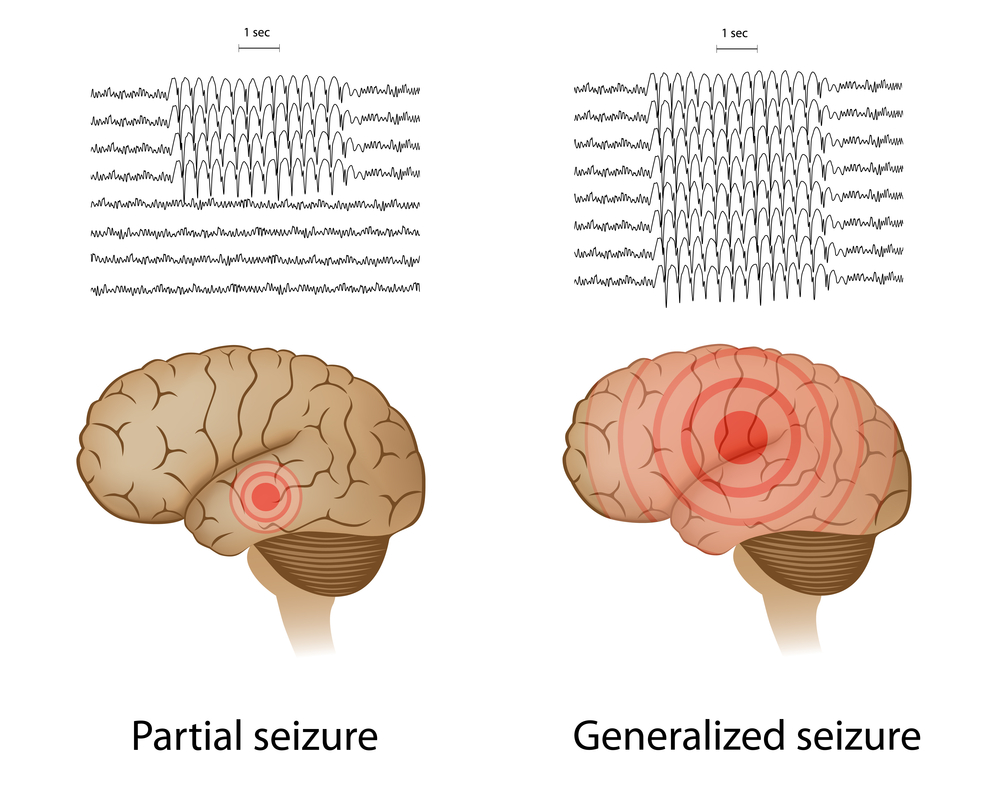Can Neurofeedback/EEG biofeedback Help With Epilepsy ?
Epilepsy was one of the very first therapeutic applications of Neurofeedback/EEG biofeedback in 1972 when Barry Sterman eliminated seizures in a 23 year-old female epileptic, who then came off medication and got a driving licence. In this paper Barry Sterman describes how he accidentally discovered how neurofeedback-trained cats were less susceptible to seizures when exposed to rocket fuel, and went on to replicate this remarkable discovery in monkeys then humans. He also summarises 18 separate peer-reviewed journal studies on Neurofeedback for epilepsy over a 25 year period, covering 174 patients and an average success rate of 66%: Barry, M.B. (2000). Basic concepts and clinical findings in the treatment of seizure disorders with EEG operant conditioning. Clinical Electroencephalography, 31(1).
What is Epilepsy ?
Along with Migraine, Epilepsy is best described as a neurological disturbance, manifesting in seizures. This can be a single seizure as well as seizures that occur repeatedly and unprovoked. Sometimes epileptic seizures are limited to childhood, in other cases Epilepsy can remain lifelong. The cause of Epilepsy can’t always be determined, but it is believed epileptic seizures result from brain damage and abnormal brain activity. There seems to be a relationship between factors such as brain trauma, cancer, strokes, and drug/alcohol abuse, and the presence of Epilepsy. 

Symptoms of Epilepsy
The main symptoms of Epilepsy are (recurrent) seizures. These seizures vary in types and severity, depending on which brain area is affected. For some a seizure feels like being in a ‘trance’ for seconds or minutes, others experience a decreased level of consciousness or that their body shakes uncontrollable, also known as convulsions. Other common symptoms of seizures are biting the tip or sides of the tongue and experiencing an aura, which is seen as a ‘warning sign’ prior to a seizure. This aura can for example manifest in a curious smell or taste, feelings of déjà vu or like being in a dream and feelings of fear or anxiety. Despite the great variety in seizures, doctors developed a way to classify seizures; by how much of the brain is affected. The classifications* used are
- partial seizures (simple and complex) – where only a small part of the brain is affected ; and
- generalised seizures – where most or all of the brain is affected.
There are two types of partial seizures (simple partial seizures and complex partial seizures) and generalised seizures are divided in six categories:
| SYMPTOMS OF SIMPLE PARTIAL SEIZURES (CONSCIOUSNESS IS MAINTAINED THROUGHOUT) | SYMPTOMS OF COMPLEX PARTIAL SEIZURES (AWARENESS IS LOST AND CAN’T REMEMBER WHAT HAPPENED AFTER THE SEIZURE) |
|---|---|
| Changes in the way things look, smell, feel, taste or sound | Smacking lips |
| An intense feeling that events have happened before (déjà vu) | Rubbing hands |
| A tingling sensation, or ‘pins and needles’, in your arms and legs | Making random noises |
| A sudden intense emotion, such as fear or joy | Moving arms around |
| The muscles in your arms, legs and face may become stiff | Picking at clothes |
| Twitching on one side of the body | Fiddling with objects |
| Adopting an unusual posture | |
| Chewing or swallowing |
| GENERALISED SEIZURE CATEGORIES | |
|---|---|
| Absences | Mainly affects children; the child loses awareness of its surrounding for up to 20 seconds |
| Myoclonic jerks | Arms, legs or upper body jerk or twitch, much like if receiving an electric shock, for a fraction of a second |
| Clonic seizure | Same sort of twitching as myoclonic jerks, except the symptoms will last longer, normally up to two minutes |
| Atonic seizure | All muscles suddenly relax, with the chance of falling to the ground |
| Tonic seizure | All muscles suddenly become stiff, with the chance of losing balance and falling over |
| Tonic-clonic seizure (most common) | The body becomes stiff and arms and legs begin twitching. One will lose consciousness and some will wet themselves. The seizure normally lasts between 1 and 3 min |
Treatment of Epilepsy
At the moment there aren’t any treatments that can ‘cure’ Epilepsy; seizures are mostly controlled with medication, called anti-epileptic drugs (AEDs). Unfortunately, finding the correct dose can take a long time and in 30% of the people with Epilepsy, medication isn’t sufficient to control seizures. Surgery in order to remove affected brain area(s) or installing an electrical device to control seizures are other options, but these options are limited to more difficult cases.
Neurofeedback and Epilepsy
With Neurofeedback, specific symptoms of Epilepsy can be targeted, however, every individual is different and to what extent the brain can recover or compensate abnormalities. Since abnormal brain activity, also know as instabilities, are seen as the main cause of Epilepsy, the most important goal during Neurofeedback training is stabilising the brain. In other words, ‘to train the brain to control it’s abnormal activity’. Neurofeedback is a treatment option applicable to all types of seizures and helpful in the case of brain damage and brain abnormalities.  Other training options can be physical calming, resulting in improved balance and coordination, or enhancing emotional control, which for example can reduce anxiety. As the research shows, Neurofeedback can be very effective in reducing or eliminating epileptic seizures. Some people might describe Neurofeedback as a ‘cure’ for epilepsy, however we don’t use this term as we don’t regard brain deregulation as a ‘disease’.
Other training options can be physical calming, resulting in improved balance and coordination, or enhancing emotional control, which for example can reduce anxiety. As the research shows, Neurofeedback can be very effective in reducing or eliminating epileptic seizures. Some people might describe Neurofeedback as a ‘cure’ for epilepsy, however we don’t use this term as we don’t regard brain deregulation as a ‘disease’.
 Other training options can be physical calming, resulting in improved balance and coordination, or enhancing emotional control, which for example can reduce anxiety. As the research shows, Neurofeedback can be very effective in reducing or eliminating epileptic seizures. Some people might describe Neurofeedback as a ‘cure’ for epilepsy, however we don’t use this term as we don’t regard brain deregulation as a ‘disease’.
Other training options can be physical calming, resulting in improved balance and coordination, or enhancing emotional control, which for example can reduce anxiety. As the research shows, Neurofeedback can be very effective in reducing or eliminating epileptic seizures. Some people might describe Neurofeedback as a ‘cure’ for epilepsy, however we don’t use this term as we don’t regard brain deregulation as a ‘disease’.
Source:
http://realhealthtreatments.info/important-things-to-remember-about-neurofeedback-for-epilepsy-to-reduce-seizures/

No comments:
Post a Comment